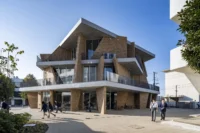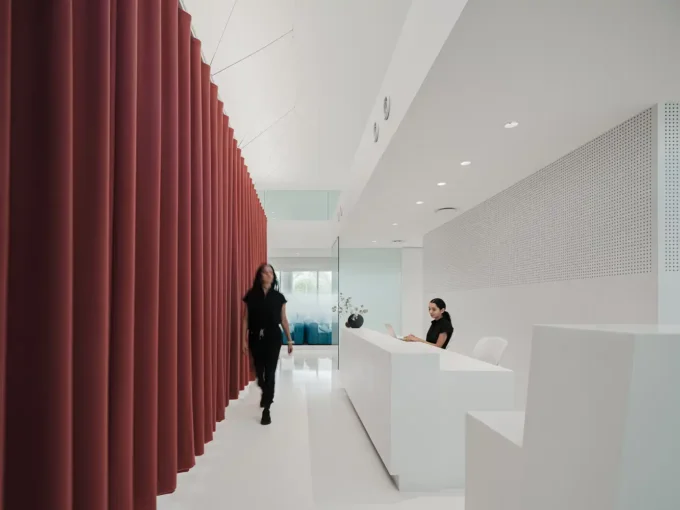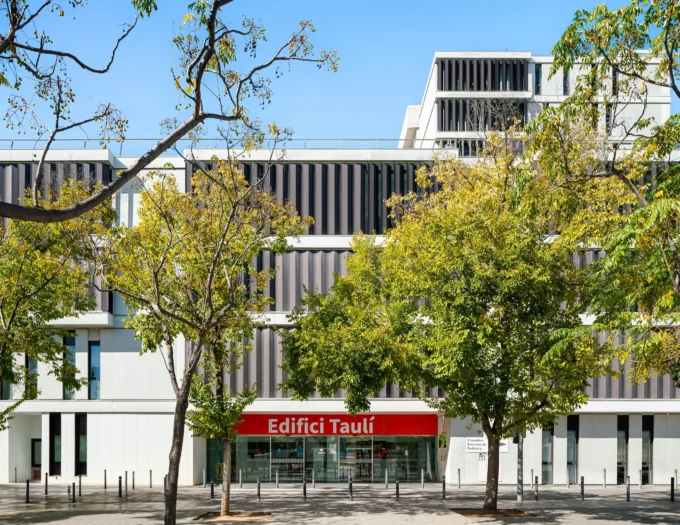Wheerlicht Apartments, designed by GVA Architecten, is a striking residential development that breathes new life into a formerly outdated neighborhood in Purmerend, a town located 25 kilometers from Amsterdam. The project, positioned on the site of an abandoned social neighborhood center on Churchillaan, introduces 52 contemporary apartments, a 500 m² social medical center, and an underground parking garage, reshaping both the urban fabric and the local community experience. Through its distinctive design, the development reflects an architectural dialogue between light, water, and urban vitality, offering residents both functional comfort and aesthetic delight.

Urban Context and Planning
Purmerend’s history as a 15th-century fishing village, set amidst marshes and lakes below sea level, deeply informs the project’s urban planning strategy. By the 1960s and 1980s, Purmerend underwent rapid expansion under the CIAM principles, emphasizing large-scale residential neighborhoods with high- and low-rise buildings and broad green spaces interwoven with traffic arteries. Wheerlicht Apartments situates itself within this historical narrative, occupying a pivotal node where the road system twists, transforming a previously underutilized lot into a vibrant, community-focused development. The project carefully balances density with accessibility, integrating green spaces and pedestrian-friendly connections while respecting the town’s spatial hierarchy.

Architectural Concept
At the heart of the design is a layered architectural form, consisting of a four-story “body” and a six-story “head,” creating a dynamic and optimistic presence within the neighborhood. The structure is expressive yet approachable, its brick façade combined with large windows producing a sense of resilience tempered by warmth. White concrete detailing around the windows accentuates perspective and depth, producing shifting patterns of light and shadow that change with the day and weather. The interplay of materials—ranging from sleek brickwork to reflective concrete—creates a lively façade that responds both to natural light and to the water below, offering an almost poetic reflection of its surroundings.
The building’s double-height resident entrance hall, framed by alternating open and closed façade sections, serves as a welcoming threshold, emphasizing transparency and connection to the outdoor environment. This spatial articulation not only defines a clear communal gathering space but also allows for visual continuity between interior and exterior areas. The staggered balconies, finished with mother-of-pearl reflective surfaces, establish a rhythm that enlivens the façade while creating semi-private outdoor spaces for residents.

Materials and Detailing
A palette of refined brick shades and horizontal patterning animates the façades, bringing richness and tactility up close. The meticulous attention to façade detailing ensures a strong visual identity while creating a sense of cohesion with the surrounding built environment. Inside, large windows maximize natural light, framing views of the surrounding greenery and waterways. These visual connections extend the living space outward, emphasizing the project’s relationship with Purmerend’s water-rich landscape.
Sustainability is also embedded in the design. The apartments are connected to the urban heating network using waste heat, eliminating the need for individual gas connections and reducing carbon emissions. Underfloor heating ensures comfort while optimizing energy efficiency, and the generous outdoor areas encourage a connection with nature, promoting resident well-being.

Community and Residential Experience
The project’s layout and orientation foster a strong sense of community while ensuring privacy and individuality for each home. Residents benefit from generous balconies, private terraces, and shared green spaces, all designed to encourage interaction while offering moments of quiet retreat. The central green courtyard serves as a communal oasis, softening the urban density and providing opportunities for recreation and relaxation. Reflections on water surfaces amplify the aesthetic experience, connecting the building visually to its environment and enhancing the feeling of lightness and openness.
Wheerlicht Apartments is more than just a residential complex; it is a catalyst for urban renewal, reviving an outdated neighborhood with a confident yet sensitive architectural intervention. The building’s expressive head, reflective materials, and dynamic massing inject energy into the streetscape, inspiring optimism and engagement from both residents and passersby.

Conclusion
Through its thoughtful combination of urban planning, architectural expression, material richness, and sustainability, Wheerlicht Apartments successfully revitalizes its neighborhood while offering high-quality living for its residents. Its layered form, interplay of light and water, and integration of greenery create a development that is simultaneously functional, inspiring, and contextually resonant. The project exemplifies how contemporary residential architecture can harmonize with history, environment, and community, providing both aesthetic enjoyment and practical value for present and future residents.
Photography: Thomas Mayer
- Balconies and terraces
- Brick façade design
- community-focused architecture
- Contemporary apartments
- Daylight in residential buildings
- energy-efficient apartments
- Green courtyard
- GVA Architecten
- Material detailing
- Mixed-Use Residential Design
- Neighborhood revitalization
- Purmerend architecture
- Residential architecture Netherlands
- Social medical center
- Sustainable Residential Design
- Underground parking design
- Urban density solutions
- Urban renewal
- Water-sensitive design
- Wheerlicht Apartments






















































Leave a comment